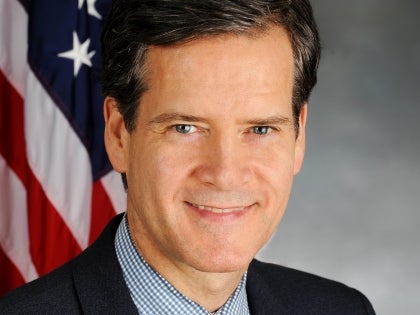
My Testimony Before the New York City Rent Guidelines Board on Proposed Rent Guidelines
June 19, 2018
Thank you Chair Roberts and members of the Rent Guidelines Board (RGB) for the opportunity to submit testimony regarding the proposed guidelines for rent-stabilized apartments, lofts, and hotel units for leases renewing between 10/1/2018 and 9/30/2019. I represent New York State’s 27th Senate District, which includes the neighborhoods of East Village, Greenwich Village, Midtown/East Midtown, Clinton/Hell’s Kitchen, Chelsea, Columbus Circle, Times Square, Stuyvesant Town-Peter Cooper Village, the Lower East Side, and the Upper West Side. This mixed income district is composed largely of tenants, thousands of them rent-regulated, both in small buildings and iconic rental complexes, including Stuyvesant Town-Peter Cooper Village, London Terrace Gardens, Westbeth, and Phipps Plaza. As such, these proposed rent guidelines are crucial to my district and, I believe, New York City as a whole.
After the Board’s decision to increase rents last year, a rent freeze would offer a necessary respite from the constant financial anxiety experienced by hard working New Yorkers. As you know, many advocates are pushing for a rent freeze, or even a rollback, this year. I join them in this request, not only because the data supports our position but because New York City is deep into an existential affordability crisis, and it is the proper role of government to be a bulwark against homelessness, displacement, and further economic segregation.
Given this reality, I was disappointed and frustrated to learn that the RGB has suggested rent increases ranging from 0.75% to 2.75% for one-year leases, and 1.75% to 3.75% for two-year leases for rent-stabilized apartments. As you know, the RGB's mission is to create price points that would be present if New York City’s rental market were operating under fair, free-market conditions. A vacancy rate of 5% is considered the line of demarcation for a properly operating market, and the current vacancy rate of 3.63% must be considered a sign of dangerous instability requiring the steadying hand of government.
A lot has been written about how the data justifies a rent increase, because the Price Index of Operating Costs increased by 4.5% over last year. This single data point only justifies a rent increase if one ignores the rest of the data made available by the RGB's excellent research staff. Those numbers tell us, for instance, that for the 12th straight year Net Operating Income grew by 4.4% this year. If costs are going up by 4.5% and you're still making a net profit of 4.4%, then you do not need to be saved by government. The people whose hard-earned paychecks are supplying that 4.4% profit increase are the ones in need of saving.
But it is time to do more than tinker around the edges of percentiles, and instead to have a real discussion about the purpose of rent regulation and who we believe deserves to call New York City home.
Since 1994, New York City has lost a net 147,512 rent-stabilized apartments -- a staggering number. In 2017, we lost 6,657 rent stabilized units. The single largest share of responsibility for the loss of stabilized units was high rent or vacancy deregulation; 53% of the stabilized units we lost in 2017 were lost because a long-term stabilized tenant gave up on fighting to keep a home in New York and left, or because their rent finally got too high. If each stabilized apartment we lost housed only one person - and they surely housed far more on average - then it would be as though we kicked out 22% of Boston's population. It is impossible to overstate how corrosive this is to the character of a city that was built for and by working people.
This is one reason I recently introduced a package of bills to combat systemic practices by unscrupulous property owners to displace rent-regulated tenants. Property owners regularly submit building applications to the NYC Department of Buildings (DOB) that falsely state there are no tenants, then use aggressive means of renovation to vacate the most vulnerable rent-regulated tenants and return those apartments to market value in order to turn a profit. My legislation (S8573) would change the penalty for this practice from a fine that landlords see as the cost of doing business to a class E felony. I also introduced a bill (S8810) that requires DOB to independently verify that there are no rent-regulated tenants living in the building when the property owner has indicated such. In order to de-incentivize this practice in its entirety, I introduced a bill (S8574) that requires property owners to restore as many units as possible to rent-regulated status as the property owner has made unlivable through their own use of construction harassment. I urge the Board to think carefully about giving a rent bonus to landlords who already cut corners and hunt for profit, too often at the detriment of rent-regulated tenants.
Real estate ownership, including ownership of rent-regulated properties, will always be a high growth industry in New York. But the supply of the citizens who give New York its character is not similarly guaranteed. We need artists and iron workers living alongside lawyers and doctors for our city to retain its fundamental ethos, and this is simply not possible if we fear a slightly smaller paycheck for landlords more than we fear homelessness and segregation.
I understand that the preliminary vote has already set the range for increases, and I dispute the assertion that those ranges are binding. It does not say so in the statute. Therefore, I am appealing to the nine of you, who care about New York City enough to spend your time on a project as thankless as this, to do the right thing and not institute a rent increase.
Thank you for the opportunity to testify before you today